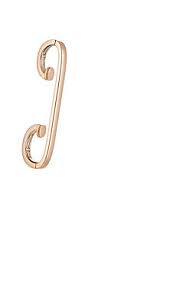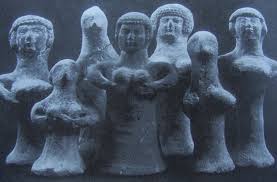chandelier berbere

This article is about a mythological figure. For other uses, see Antaeus (disambiguation). Antaeus (Greek: Ἀνταῖος, Antaîos, lit. Berber: Änti) was a figure in Greek and Berber mythology. In Greek sources, he was the son of Poseidon and Gaia.[2] His wife was the goddess Tinge, and he had a daughter named Alceis or Barce. He was famed for his loss to Heracles as part of his 12 Labors. Heracles and Antaeus, red-figured krater by Euphronios, 515–510 , Louvre (G 103) Heracles crushing Antaeus by Ottavio Mosto (1690) Antaeus would challenge all passers-by to wrestling matches and remained invincible as long as he remained in contact with his mother, the earth.[3] As Greek wrestling, like its modern equivalent, typically attempted to force opponents to the ground, he always won, killing his opponents.[3] He built a temple to his father using their skulls.[3] Antaeus fought Heracles as he was on his way to the Garden of Hesperides as his 11th Labor. Heracles realized that he could not beat Antaeus by throwing or pinning him.

Instead, he held him aloft and then crushed him to death in a bear hug. The contest between Heracles and Antaeus was a favored subject in ancient[3] and Renaissance sculpture. Antaeus was known to the Berbers as Änti,[] a distinct figure from the Egyptian god of that name.
chandelier stop mt4 indicator downloadGreeks of the 6th century BC, who had established colonies along the coast of North Africa, placed Antaeus in the interior desert of Libya.
chandeliers boutique rochester ny A location for Antaeus somewhere beyond the Maghreb might be quite flexible in longitude: when the Roman commander Quintus Sertorius crossed from Hispania to North Africa, he was told by the residents of Tingis (Tangier), far to the west of Libya, that the gigantic remains of Antaeus would be found within a certain tumulus;
chandelier exit formula metastock
digging it open, his men found giant bones; closing the site, Sertorius made propitiatory offerings and "helped to magnify the tomb's reputation".[7] In Book IV of Marcus Annaeus Lucanus' epic poem Pharsalia (c. AD 65-61), the story of Heracles' victory over Antaeus is told to the Roman Curio by an unnamed Libyan citizen. The learned client king Juba II of Numidia (died 23 BC), husband of the daughter of Antony and Cleopatra, claimed his descent from a liaison of Heracles with Tinga, the consort of Antaeus.[8] In his Life of Sertorius cited above, Plutarch recounts what he says to be a local myth, according to which Heracles consorted with Tinge after the death of Antaeus and had by her a son Sophax, who named a city in North Africa Tingis after his mother. Sophax in his turn was father of Diodorus who conquered many Libyan peoples with his army of Olbians and Mycenaeans brought to Libya by Heracles.[9] Moreover, some related that Heracles had a son Palaemon by Iphinoe, the daughter of Antaeus and (presumably) Tinge.

Scholiasts on Pindar's Pythian Ode 9 also recorded a story which made Antaeus king of the city Irassa in Libya, and father of a daughter named either Alceis or Barce. Antaeus promised her hand to the winner of a race, just like Danaus did to find new husbands for his daughters. Alexidamus beat all the other suitors in the race and married the daughter of Antaeus. Three versions of this story, with minor variations, were collected by the scholiasts; one of those versions made Antaeus, king of Irassa, a figure distinct from the Antaeus killed by Heracles, while another one suggested that they were one and the same. He is alluded to in Olson's poem "Purgatory Blind". ^ Hyginus, Fabulae 31. ^ a b c d EB (1878). ^ Pseudo-Apollodorus, Bibliotheke ii. ^ Myth and Territory in the Spartan MediterraneanTravelling Heroes in the Epic Age of Homer ^ Fox 2008:182, noting Plutarch, Sertorius9.3–4.Fox 2008:182 ^ Pliny, Natural History, 5. 3. 8 noted in D.W. Roller, The World of Juba II and Kleopatra Selene, 2003:54 and 154, and by Fox 2008:182.

^ Plutarch, Life of Sertorius, 9. ^ Tzetzes on Lycophron 662 ^ Scholia on Pindar, Pythian Ode 9, 185, referring to Pherecydes, Pisander of Camirus and other unspecified writersThe collected poems of Charles Olson: excluding the Maximus poems. University of California Pr, 1997. The Suspensions collection is inspired by mobiles, especially Alexander Calder’s work (and his artist jewellery). It is in the continuity of Serti Sur Vide floating diamond collection, except that you can wear some versions in pairs and also as modernized chandelier earrings.Among the catwalk presenters was Boucheron, which showcased the work of its creative director, Claire Choisne, in the gilded 18th-century salons above its flagship store on the Place Vendôme. The show, curated by Olivier Saillard, director of the Paris fashion museum Palais Galliera, featured a series of about 60 bejeweled odes to nature. Highlights included delicate wheat stalks, the Blé d’Été set, forged in white gold and diamonds and displayed across necks, fingers and wrists as if blown by a breeze.

The Cape de Lumière, made mostly of fine, twisted gold chains, took 1,000 hours to make. And the Nara the Deer ring, with white and brown diamonds and detailing in black sapphires and onyx, brought a playful, Bambi-esque touch to the proceedings. Bulgari was another jewelry brand that opted for a catwalk show, sending 16 models in purple evening gowns to walk among its guests during an evening at the Italian embassy in Paris. The 80-piece collection, Magnificent Inspirations, showcased a big, bold and beautiful aesthetic, with graphic designs that highlighted the color and size of centerpiece stones. For example, the Gemme Principesche necklace included seven perfectly matched emeralds that took three years to source, while the Extravaganza necklace was a carefully curated explosion of 11 cabochon amethysts, emerald and rubellite beads and seven pearls, all set on rose gold and accented with diamonds. Anyone walking through the Place Vendôme during Couture Week was confronted with an unexpectedly bucolic scene within the gray heart of Paris: tens of thousands of golden wheat stalks, blowing in the breeze.

The installation, below, by the artist Gad Weil was commissioned by Chanel to celebrate Les Blés de Chanel, the house’s latest haute joaillerie collection. The 62-piece line was full of references to the humble crop, with its imagery worked into necklaces, bracelets, rings, earrings and watches. Standouts included the Fête des Moissons, or Harvest Festival, necklace of 18-karat white and yellow gold with about 120 carats of yellow and white diamonds fanning out like wheat stalks, with a 25-carat brilliant-cut intense yellow diamond at its center; Moisson d’Or, or Golden Harvest, earrings in 18-karat white and yellow gold with yellow sapphires, yellow sapphire beads and diamonds; and the Brins de Printemps necklace, all diamonds, tourmalines, peridots and aquamarines. De Beers was a relatively late entrant to haute joaillerie, introducing its first full collection in 2012. This season the house unveiled London by De Beers, an all-white diamond smorgasbord inspired by a journey along the River Thames with five key pieces: Albert Bridge, Battersea Light, Elizabeth Tower, the London Eye and, a pièce-de-résistance set, the Thames Path.

Its necklace highlights three perfect and identical pear-shaped stones glistening like water droplets. This season Victoire de Castellane looked to the architectural and interior splendor of Versailles as inspiration for her latest high jewelry collection, at 60 pieces the largest she has ever done for the house of Christian Dior. ‘‘If there’s a single image of Versailles that dominates for me, it’s the idea of jewelry illuminated by candlelight,’’ she said at the presentation, above. ‘‘That kind of light is just exquisite, and I wanted to capture the same colors and intensity within the jewels.’’ References to the curtain tiebacks were found in one diamond-drop necklace, while the spectacular chandeliers of the palace found form in the tasseled Salon de Mars Glace earrings. Oxidized silver was used for many of the settings as a nod to 18th-century jewelry-making techniques, and the Chambre de la Reine necklace, inspired by the queen’s bedchamber, was a highlight: a cascade of white and pink gold and darkened silver, on which 231 stones were mounted, including a 12.26-carat pink sapphire.

Graff opened its flagship store on the Place Vendôme, its first shop in the French capital, just in time for Couture Week. There was no specific haute joaillerie collection but dozens of wow-factor pieces — the house’s aesthetic philosophy has long been the bigger gemstone the better — were dotted around the store. The Princess Butterfly secret watch. When its highly sculpted wings, pavéd in baguette diamonds, flutter apart, the mother-of-pearl face of a hidden timepiece is revealed. Pierre Hardy, marking his 15th anniversary at Hermès, was inspired by the sands of time and the reaches of the solar system for his Continuum collection. Showcased in a presentation designed by the French artist Didier Faustino, Mr. Hardy’s ideas found form in show-stopping sets of jewelry. Ombres et Lumière, black and white pearls of varying sizes, wound its way around necks and fingers like futuristic helix structures while Attelage Céleste included a standout pendant with an 18.6-carat pink opal at its heart, orbited by imperial topaz and diamonds with a pear-shaped brown sapphire.

The Swiss watchmaker and jeweler significantly increased its presence during Couture Week, showcasing its 150-piece collection, called The Sunny Side of Life, at the Hôtel Potocki, a grand palace in the heart of Paris. Design cues seemed to have been taken from the golden glamour of a 1970s California pool party — there was a white gold and diamond cuff studded with random slabs of lapis lazuli like haute paving stones; the Summer Crush hammered-gold necklace, with an explosion of gems and a turquoise-colored 7.84-carat tourmaline at its center; and a cuff watch with grass-green emeralds and white diamonds that fanned out like exotic foliage around the face. Most of the jewelry house décor around the Place Vendôme leans heavily on the past, with opulent finishes. So it was refreshing to see Repossi, one of its newest arrivals, take a step in the opposite direction. Its boutique, designed by the Dutch architecture firm OMA, is small, sleek and minimalist, lined with mirrored slats that rotate to reveal the jewelry display cases hidden within.

Most of the pieces have a similar design direction, the creations of the 29-year-old visionary now behind the brand, Gaia Repossi. She has been a driving force in the emergence of street-style trends at high jewelry prices, and on show were great examples: the Berbere ear cuffs in black gold and pavé diamonds were spectacular, while the one-of-a-kind Serti sur Vide pieces, used diamonds and other gemstones set ‘‘on void,’’ as if they were suspended, to create striking neck pieces and rings. In August, the Parisian jewelry house founded in the ’40s by Alexandre Reza opened a boutique in the newly renovated Paris Ritz, its first retail location since Olivier Reza took over the business from his father in 2008. ‘‘It is an exciting moment for the house,’’ Olivier Reza said. ‘‘We are opening a window onto the jewels again for clients beyond the showroom.’’ A new chapter, but plenty of Reza’s signature design flourishes were apparent in the latest pieces, including Dune, a cuff bracelet featuring two pear-shaped diamonds weighing 1.73 carats and 152 brilliant-cut diamonds weighing 29.75 carats set on sand blasted and polished pink gold.

Van Cleef & Arpels has a long history of working with emeralds, notably its 1966 commission to create a coronation crown for Empress Farah Pahlavi of Iran that included a 150-carat emerald. In its latest high jewelry collection, the French house used more than 1,400 carats of the green gemstones, encased with an elegant twist in vintage designs. The Grand Opus set, for example, included a necklace showcasing three Colombian emeralds with engraved gadroon motifs on white-diamond ribbons, alongside long tasseled earrings and a clip with detachable pendants, while the Twist Émeraude torque bracelet contrasted swirls of diamonds with violet sapphires, tipped with two emerald cabochons. Also shown were pieces that incorporated more contemporary flair, like the Lune d’Eau between-the-finger ring, which elevated above the wearer’s hand a 3-carat diamond and a 3-carat emerald, surrounded by smaller stones. Louis Vuitton presented its first high-jewelry collection in 2008. Since then, its Blossom flower motif has returned again and again on key pieces.